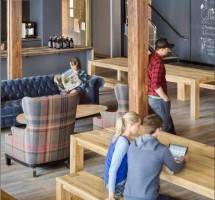October 14, 2016
Many employees remain reluctant to approach bosses for flexible working, claims study 0
 The sluggish uptake of flexible working following the introduction of new parental leave rights last year, may be down to the reluctance of many employees to ask for it. That is one of the conclusions of a new report from flexible working consultancy My Family Care and recruitment firm Hydrogen. It found that over half (54 percent) UK employees surveyed would like to work from home, but just a third (34 percent) actually do. The report surveyed 1,587 UK employees and 310 UK employers to gauge their attitudes towards and experience of flexible working. It found that over a quarter (28 percent) of employees said they did not feel comfortable even talking to their employer about the subject. Respondents claimed their wariness was down to appearing less committed and the implications for the careers and pay.
The sluggish uptake of flexible working following the introduction of new parental leave rights last year, may be down to the reluctance of many employees to ask for it. That is one of the conclusions of a new report from flexible working consultancy My Family Care and recruitment firm Hydrogen. It found that over half (54 percent) UK employees surveyed would like to work from home, but just a third (34 percent) actually do. The report surveyed 1,587 UK employees and 310 UK employers to gauge their attitudes towards and experience of flexible working. It found that over a quarter (28 percent) of employees said they did not feel comfortable even talking to their employer about the subject. Respondents claimed their wariness was down to appearing less committed and the implications for the careers and pay.

































October 7, 2016
Are we seeing the workification of home or the homification of work? 0
by Anna King • Comment, Flexible working, Workplace design
(more…)